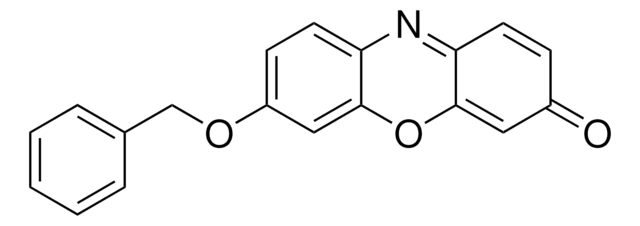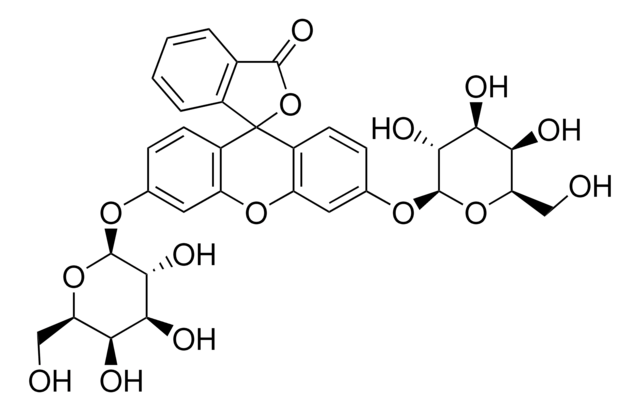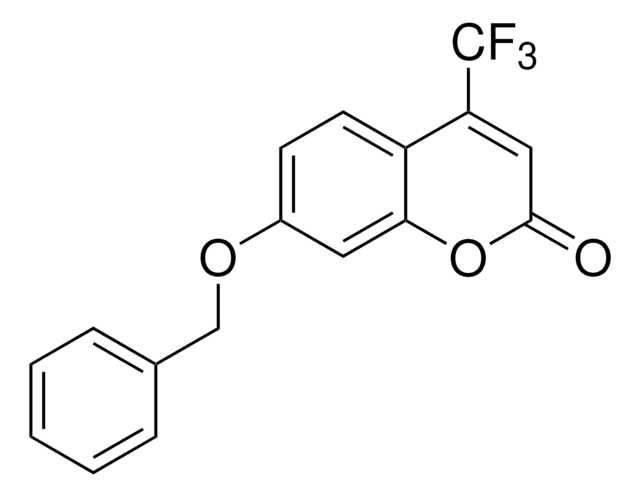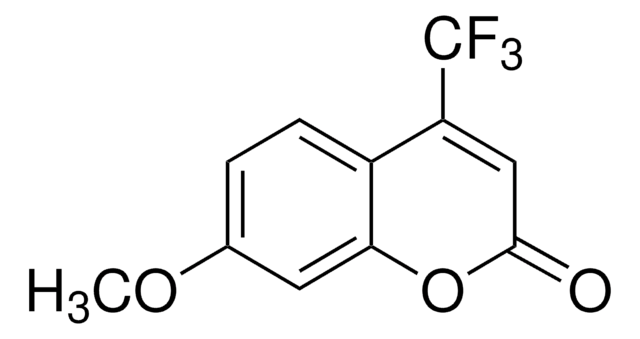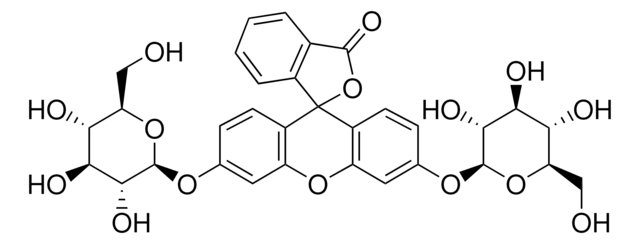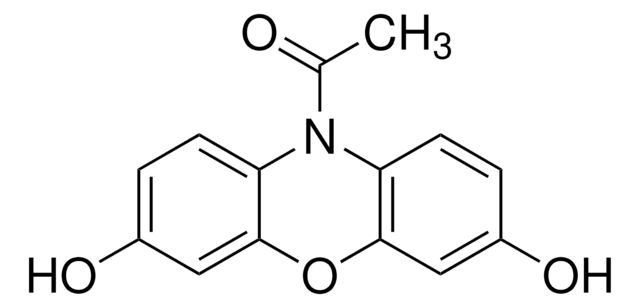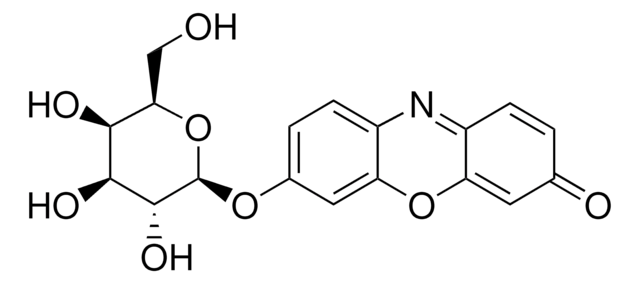P0928
Resorufin pentyl ether
Synonym(s):
7-Pentyloxy-3-phenoxazone, 7-Pentyloxy-3H-phenoxazin-3-one, O7-Pentylresorufin, Pentoxyresorufin
About This Item
Recommended Products
Assay
≥98% (TLC)
Quality Level
form
powder
solubility
acetonitrile: 0.95- 1.05 mg/mL, clear, orange
storage temp.
2-8°C
SMILES string
CCCCCOc1ccc2N=C3C=CC(=O)C=C3Oc2c1
InChI
1S/C17H17NO3/c1-2-3-4-9-20-13-6-8-15-17(11-13)21-16-10-12(19)5-7-14(16)18-15/h5-8,10-11H,2-4,9H2,1H3
InChI key
ZPSOKQFFOYYPKC-UHFFFAOYSA-N
Looking for similar products? Visit Product Comparison Guide
Related Categories
General description
Application
Biochem/physiol Actions
Signal Word
Warning
Hazard Statements
Precautionary Statements
Hazard Classifications
Eye Irrit. 2 - Skin Irrit. 2 - STOT SE 3
Target Organs
Respiratory system
Storage Class Code
11 - Combustible Solids
WGK
WGK 3
Flash Point(F)
Not applicable
Flash Point(C)
Not applicable
Personal Protective Equipment
Regulatory Listings
Regulatory Listings are mainly provided for chemical products. Only limited information can be provided here for non-chemical products. No entry means none of the components are listed. It is the user’s obligation to ensure the safe and legal use of the product.
JAN Code
P0928-1MG:
P0928-5MG-PW:
P0928-5MG:
P0928-1MG-PW:
P0928-10MG:
P0928-10MG-PW:
P0928-BULK:
P0928-VAR:
Choose from one of the most recent versions:
Already Own This Product?
Find documentation for the products that you have recently purchased in the Document Library.
Articles
Phase I biotransformation reactions introduce or expose functional groups on the drug with the goal of increasing the polarity of the compound. Although Phase I drug metabolism occurs in most tissues, the primary and first pass site of metabolism occurs during hepatic circulation.
Our team of scientists has experience in all areas of research including Life Science, Material Science, Chemical Synthesis, Chromatography, Analytical and many others.
Contact Technical Service